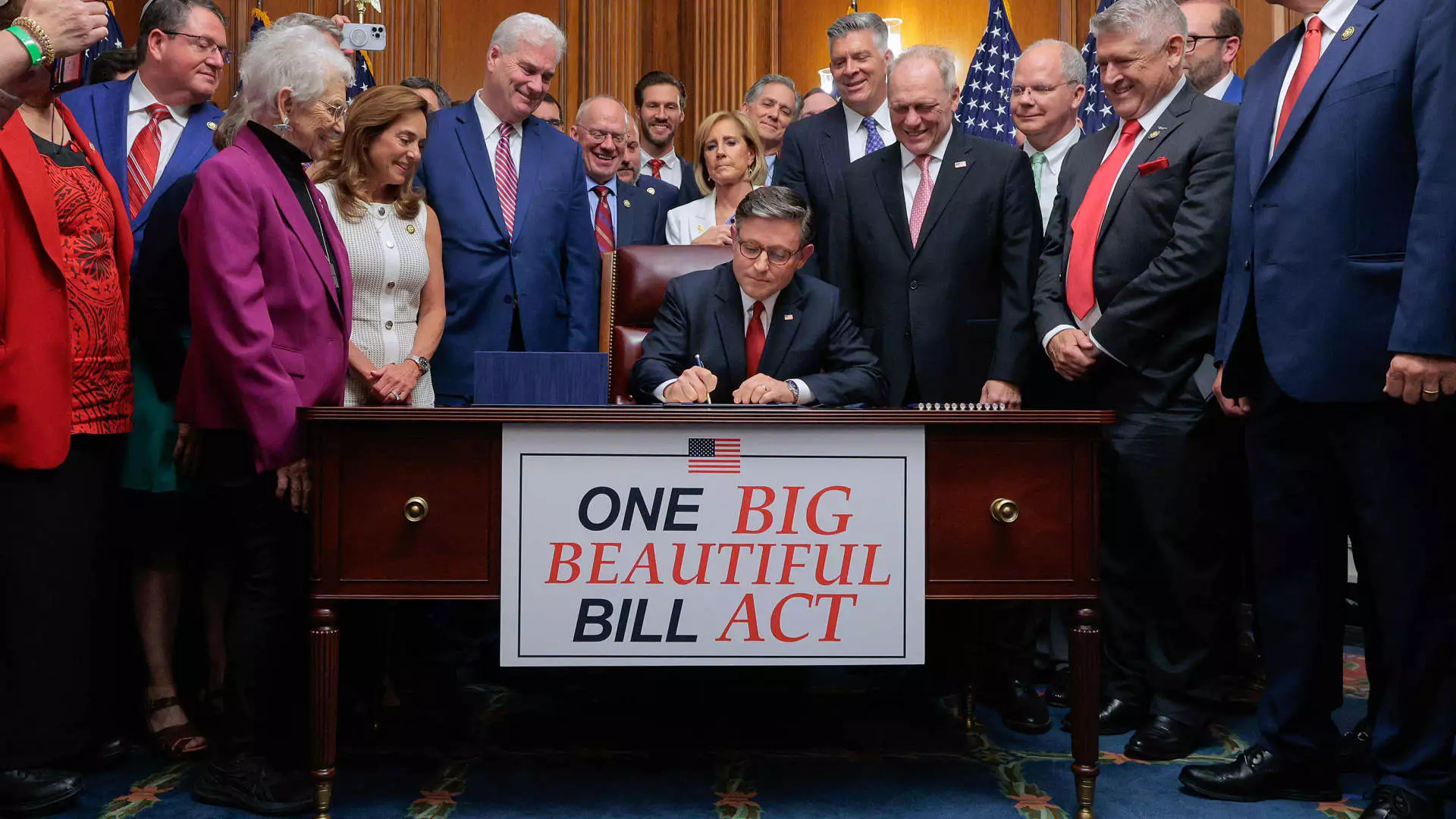The recent enactment of President Donald Trump’s so-called “Big Beautiful Bill” has superficially promised relief for many Americans, but beneath its shiny promises lies a complex web of regulations that could just as easily backfire for the unprepared. For those seeking to navigate this new tax landscape, it’s an impending minefield, one that requires more than just surface-level understanding. While policymakers trumpet the continuation of lucrative tax cuts and increased deductions, the devil is in the details—details that could entrap even the most diligent taxpayers if they don’t approach proactively and critically.
This legislation’s mottos of supporting “working families” mask a reality of nuanced, sometimes detrimental, impacts that are far from straightforward. Sure, some benefits have been extended or even improved—like increased standard deductions and higher child tax credits—but these changes hinge on a labyrinth of income thresholds and timing that can easily disarm those who rely solely on surface information. It’s not enough to accept reform at face value; a deep, skeptical analysis is necessary to avoid being swept into unintended consequences that could undo years of financial planning.
The Risk of “Tax Strategy Silos”: A Dangerous Pitfall
One of the most insidious pitfalls of the new law is the danger of strategic myopia. Many advisors are running projections—some spanning several years—in an attempt to anticipate how these sweeping changes will ripple through their clients’ financial futures. But the danger lies in viewing these adjustments as isolated “check-the-box” items rather than interconnected components of a larger plan. The danger becomes real when taxpayers focus narrowly on one aspect, like the increased standard deduction or SALT cap, without considering how these interact with other provisions such as income limits or phase-outs.
This myopic perspective can inadvertently thwart a taxpayer’s best interests. For instance, the higher SALT deduction cap appears attractive, but the bill’s phased reduction for earners between $500,000 and $600,000 creates a “trap”—where high-income earners could face a notorious “SALT torpedo,” an effective marginal tax rate of 45.5%. Such nuances reveal a dangerous gap in many taxpayers’ understanding—one that can lead to diminished benefits or unexpected tax burdens if overlooked. In essence, without comprehensive income and tax planning, even seemingly beneficial provisions can become liabilities.
The Double-Edged Sword of Extended Benefits and New Deductions
While some provisions, like the extension of the child tax credit and increased standard deductions, seem to make tax filing more palatable, the law’s temporary measures and phased expirations cast long shadows of uncertainty. For example, the boost to the premium tax credit, aimed at making healthcare more affordable during a pandemic, was not extended—potentially exposing millions of enrollees to steep premium increases in the near future. This “cliff,” where subsidies are abruptly withdrawn once income crosses a certain threshold, could stretch the hard-earned budgets of families already teetering on financial edge.
Furthermore, purported new deductions such as a $6,000 “bonus” for seniors or deductions for tip income, loan interest, or overtime earnings seem straightforward but are riddled with eligibility caveats. For individuals unaware of these intricacies, assumptions of automatic benefit could lead to overestimations of refundable benefits, or worse, eligibility miscalculations that could trigger IRS audits or penalties. These provisions illustrate the dangerous allure of “simple fixes”—they often disguise complexity that demands meticulous planning rather than blind reliance on new laws.
The Peril of Short-Term Gratification with Long-Term Risks
One underlying theme of this legislation is the temptation of short-term wins—temporary deductions, boosted credits, and high thresholds—while overlooking the long-term stability of one’s financial health. It’s a clear trap for those who prioritize immediate gains over a consistent, skeptical analysis of future implications. For instance, the phase-out of pandemic-era subsidies eliminates an affordable healthcare safety net, forcing families to confront the possibility of soaring premiums. This shift could significantly impact those with fluctuating incomes or precarious employment.
In addition, the pressure on taxpayers to rapidly adjust their strategies for the upcoming tax year encourages a reactive rather than a proactive approach. Without a comprehensive review, many might mistakenly assume they’re better off under this new law, failing to recognize that their current tax situation may require strategic restructuring—and not just blanket acceptance of benefits. This “reckless optimism,” rooted in incomplete understanding, risks leaving taxpayers vulnerable to future liabilities, higher marginal rates, or lost credits.
In a political environment obsessed with narratives of relief and prosperity, it’s all too common to accept reforms at face value. But a truly critical perspective reveals that Trump’s new tax law is riddled with complexities and potential pitfalls that can devastate unwary taxpayers. The goal shouldn’t be just to benefit from superficial deductions or credits but to scrutinize how these provisions interact within a broader financial strategy.
The lesson here is clear: don’t fall for the illusion of simplicity. Approach these new laws with a skeptical eye. Engage with qualified financial advisors who understand the intricate interplay of tax provisions, income thresholds, and phase-outs. Only through such meticulous planning can taxpayers truly safeguard their interests against the hidden traps embedded within this sweeping but perilous legislative overhaul. In the volatile landscape of tax policy, complacency is a luxury few can afford.

